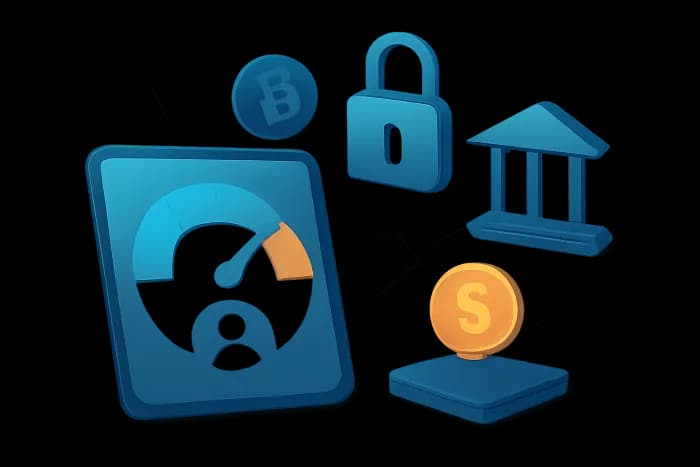On-Chain Credit Scores: Unlocking Unsecured Loans in DeFi 2.0

Introduction: The Over-Collateralization Problem
Decentralized Finance has long struggled with a critical limitation: the requirement for excessive collateral. Traditional DeFi lending protocols typically demand 150% or higher collateralization ratios, locking away capital and restricting market accessibility. This over-collateralization model excludes millions of potential users who lack substantial crypto assets but possess strong financial behaviors. Enter DeFi 2.0 – a new paradigm where on-chain credit scores are enabling truly unsecured loans by transforming blockchain activity into quantifiable risk assessments[1][4].
How On-Chain Credit Scoring Works
Decentralized credit frameworks analyze wallet behavior through machine-learning models that evaluate multiple risk dimensions:
Historical Credit Risk:
- Examines past loan repayments and liquidation events
- Wallets with consistent repayment histories receive better terms[1]
Current Exposure Analysis:
- Simulates market conditions against open positions
- Assesses collateral adequacy under volatility stress tests[1][2]
Transaction Behavior Patterns:
- Analyzes frequency, size, and recency of transactions
- Recent activity carries greater weighting than older data[1][3]
Credit Utilization Metrics:
- Measures percentage of available credit used
- Lower utilization rates indicate responsible borrowing[1][4]
These factors combine into probabilistic scores like the OCCR (On-Chain Credit Risk) Score, which dynamically adjusts loan terms without requiring personal data or KYC[1][2]. Unlike traditional FICO scores, these systems use transparent algorithms that evaluate real-time financial behavior rather than historical debt[4][5].
Unsecured Lending Workflow in DeFi 2.0
- Identity Verification: Users connect non-custodial wallets (no KYC)
- Data Aggregation: Protocols scan wallet history across DeFi platforms
- Risk Grading: Machine learning models assign credit tiers (e.g., AA to D)
- Dynamic Terms: Interest rates and loan limits adjust based on real-time scores
- Repayment Monitoring: Continuous wallet surveillance triggers alerts for risk mitigation
This workflow eliminates traditional intermediaries while maintaining rigorous risk assessment. Borrowers benefit from personalized rates, while lenders gain data-driven default protection[3][4].
Risk Management for Liquidity Providers
Unsecured lending pools incorporate sophisticated protection mechanisms:
| Strategy | Implementation Example | Risk Mitigation Impact |
|---|---|---|
| Insurance Pools | Protocol-funded coverage | Absorbs first-loss defaults |
| Senior/Junior Tranching | Capital structure separation | Contains contagion risk |
| Dynamic Rate Adjustment | Real-time score-based repricing | Prices risk continuously |
| Default Swaps | Tokenized risk transfer | Distributes exposure |
These strategies maintain sustainable yields despite uncollateralized exposure. Current default rates in established pools remain below 2.5% – competitive with traditional fintech lending[4][5].
Future Applications: Beyond Crypto-Native Lending
-
BNPL for NFT Marketplaces:
- Fractionalized repayment plans for high-value NFTs
- Credit limits based on creator royalty streams
-
Creator Financing:
- Loans against social token revenue
- Collateralization via future content royalties
-
Micro-Loan Ecosystems:
- Sub-$100 loans for emerging economies
- Reputation-based terms via Soulbound tokens
These applications position DeFi 2.0 to serve real-world financial needs beyond speculative crypto activities[4][5].
Conclusion: The Path to Real-Economy Relevance
On-chain credit scoring represents DeFi's most significant evolution toward mainstream viability. By transforming transaction histories into quantifiable risk metrics, protocols can finally offer under-collateralized loans at scale. As these systems mature with richer data sources – including verified off-chain income and Soulbound identity tokens – DeFi 2.0 stands poised to unlock trillions in currently inaccessible credit markets. The transition from over-collateralized to reputation-based lending marks not just technological progress, but finance's most profound democratization since microfinance[1][3][5].